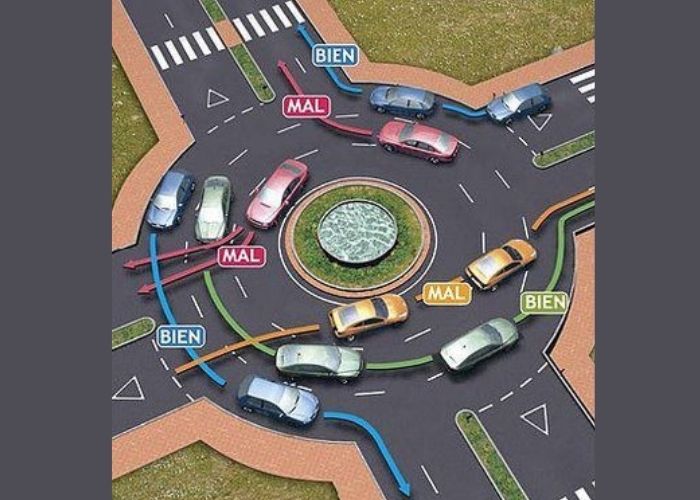Roundabouts are a subject of much discussion and debate in Spain. Are the rules the same as in the UK? Do you know the rules? Or do you just think you do? What is your opinion?
There seems to be an accident or near accident almost every day as we negotiate the roundabouts in Spain. But who would be at fault in the event of such an accident? According to the statistics of DGT, one in three drivers involved in an accident at a roundabout committed an offence. The most common of offences are speeding, and not keeping a safe distance from the vehicle in front.
There are three key elements to driving on a roundabout: entry, circulation, and exit.
Entry
When approaching a roundabout, make sure you look left to see the flow of the traffic. You must also be patient as if there is someone in the queue in front of you, they may not enter when you think they will. Also, you must remember to check to the right as there could be pedestrians attempting to cross. There are often zebra crossings located at roundabouts!
Furthermore, remember the main rule in roundabouts: priority is given to the vehicles circulating inside. Therefore, you must give access as they have right of way. Even if this means stopping your vehicle mid-entry to let someone pass.
The most important thing, as with driving in general, is to anticipate.
When entering, it is essential to position yourself correctly: in a roundabout, it is mandatory to access from the right lane whenever it is free and possible.
If you enter a roundabout in the outside lane and intend to take the first exit, you can remain in it until you exit. This is the same if you intend to continue straight, but you should indicate just prior to exit.
Relatetd post: These are the most peculiar violations of traffic rules in Spain
However, if you wish to turn left or use the roundabout to change direction, you should enter the roundabout using the left-hand lane. You must remain there until you pass the exit before the one you want to take. Then you signal and manoeuvre towards the outside lane if it is safe to do so. You will then, therefore, exit from the outside lane.
Circulation on a roundabout
Once inside the roundabout, you must circulate in the outside lane if it is free.
However, in the roundabouts located within urban areas, you can circulate using the lane that best suits your destination. Although, in any case, if you are going to leave the roundabout at the first exit, the most advisable option is always to use the outside lane.
But if you are planning to take the last exit or to change direction, the outside lane may not be the best option in busy roundabouts. In such cases, it is best to use the inside lanes. Then graduate towards the outside lane as you get closer to your exit. However, you must signal each time you change a lane while respecting the priority of other circulating vehicles.
Exit the roundabout
If you are attempting to change lanes to facilitate your exit, if the roundabout is too busy, it may be safer to continue another round.
If you attempt to exit a roundabout from an inside lane, you will be at fault if an accident is caused. This is a common cause of collision, as drivers wrongly assume the person in the outside lane will have left the roundabout at the first exit.
In Summary
To summarise, the Dirección General de Tráfico (DGT) advises remembering these two basic ideas: vehicles already circulating through the roundabout have preference and you should always exit from the outer lane, the right one. And signalling lane changes. This Facebook video from DGT shows the above examples of entering, circulating, and exiting roundabouts (glorietas). Furthermore, the example shows whether the driver is good (bien) or bad (mal)


